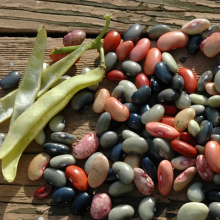
The United Nations have launched the 2016 International Year of Pulses to raise public awareness of the benefits of beans, peas and lentils. A ceremony on 10 November in Rome marked the official beginning of a year-long initiative under the slogan ‘nutritious seeds for a sustainable future’, that aims at encouraging the utilisation of pulses throughout the food system, drawing attention to their benefits for soil fertility and adaptation to climate change as well as for combating malnutrition. “Pulses are important food crops for the food security of large proportions of populations, particularly in Latin America, Africa and Asia, where pulses are part of traditional diets and often grown by small farmers,” said José Graziano da Silva, Director-General of the Food and Agriculture Organisation (FAO). He underlined that pulses are a highly nutritious source of protein and vital micronutrients that can greatly benefit people’s health and livelihoods. The FAO chief added that pulses have double the proteins found in wheat and triple the amount found in rice. They are also rich in amino acids and b-vitamins. “Despite strong evidence of the health and nutritional benefits of pulses, their consumption remains low in many developing and developed countries. The International Year can help overcome this lack of knowledge,” UN Secretary-General Ban Ki-moon said in a message. Pulses are also an alternative to more expensive animal-based protein. According to FAO, protein sourced from milk, for example, is five times more expensive than protein sourced from pulses. On the other hand, farmers can obtain higher prices for pulses than for cereals. Pulses therefore offer an opportunity to lift farmers out of rural poverty. There are hundreds of varieties of pulses grown worldwide, including all varieties of dried beans, such as kidney beans, lima beans, butter beans and broad beans, as well as chickpeas, cowpeas, black-eyed peas and pigeon peas. But pulses are not only good for human health: The FAO also stressed the potential of pulses to improve animal and soil health and support biodiversity: Due to their nitrogen-fixing properties, pulses can improve soil fertility and reduce the dependency on synthetic fertilisers, thus leading to a smaller carbon footprint and less greenhouse gas emissions. By improving soil health, pulses not only help to enhance the productivity of farmland but also promote biodiversity, as they create a rich home for germs, bugs and bacteria of all kinds. In addition, using pulses as cover crops and in intercropping systems can reduce soil erosion. This shows that pulses are closely linked to the topic of the 2015 International Year of Soils. (ab)
